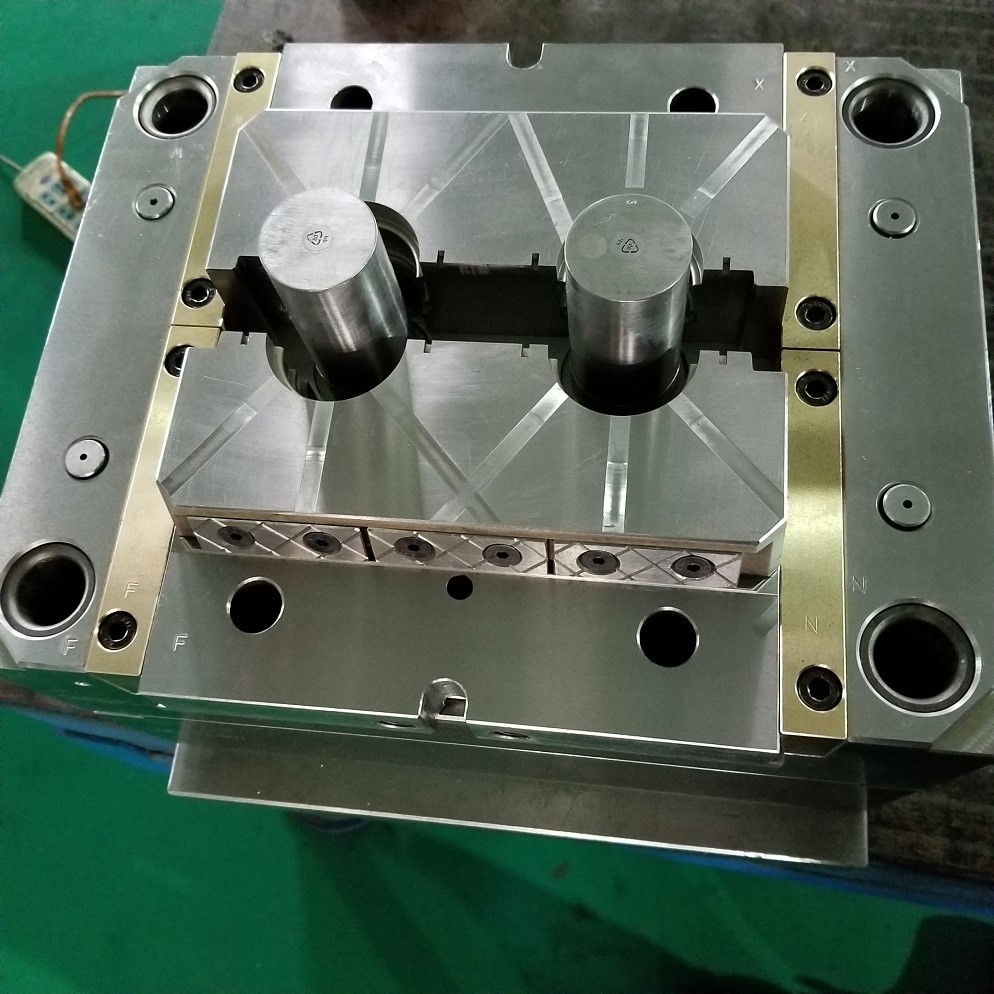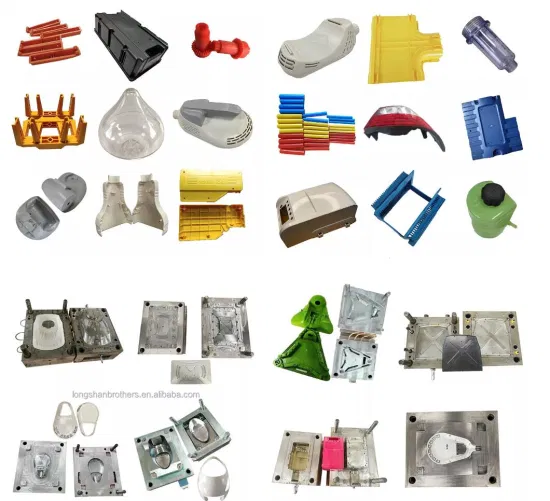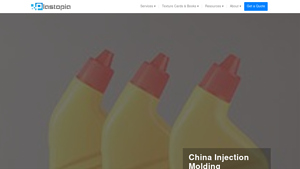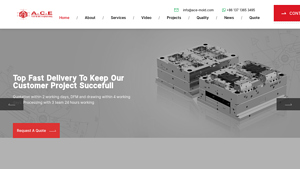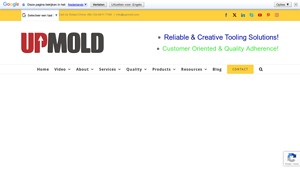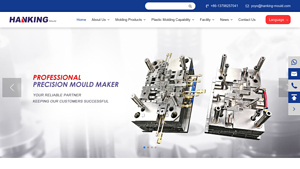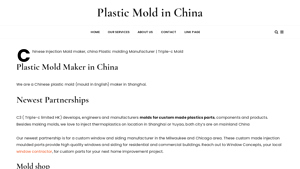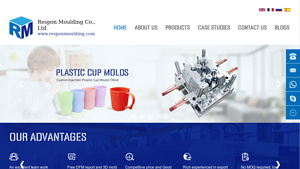Plastic Molds China Guide: Type, Cost, Top List…
Introduction: Navigating the Global Market for plastic molds china
In an increasingly competitive global marketplace, sourcing high-quality plastic molds from China presents both an opportunity and a challenge for international B2B buyers. With the rapid evolution of manufacturing technologies and varying supplier standards, navigating the landscape of plastic mold suppliers can be daunting. This guide aims to demystify the complexities of procuring plastic molds in China by providing insights into types of molds, applications, supplier vetting processes, and cost considerations.
Buyers from Africa, South America, the Middle East, and Europe—such as Nigeria and Vietnam—will find tailored strategies to assess potential suppliers effectively and make informed purchasing decisions. By highlighting key factors such as quality control, material selection, and production capabilities, this guide empowers businesses to partner with reliable manufacturers that meet their specific needs.
Whether you are a startup looking to scale production or an established company seeking cost-effective solutions, understanding the nuances of the Chinese plastic mold market is crucial. This comprehensive resource equips you with actionable insights to optimize your sourcing strategies and ensure that your projects are completed on time and within budget. Together, we will explore the essential components of successful procurement, helping you navigate the global market with confidence.
Understanding plastic molds china Types and Variations
| Type Name | Key Distinguishing Features | Primary B2B Applications | Brief Pros & Cons for Buyers |
|---|---|---|---|
| Injection Molds | High precision, suitable for mass production | Automotive, consumer goods | Pros: Cost-effective for large runs; Cons: High initial tooling costs. |
| Blow Molds | Used for hollow parts; involves air pressure | Bottles, containers | Pros: Efficient for large volumes; Cons: Limited to specific shapes. |
| Compression Molds | Utilizes heat and pressure to form parts | Electrical components, automotive | Pros: Good for large, bulky parts; Cons: Slower production rates. |
| Rotational Molds | Produces hollow items; involves rotating molds | Toys, tanks, large containers | Pros: Versatile for complex shapes; Cons: Longer cycle times. |
| Thermoforming Molds | Uses heat to form plastic sheets over a mold | Packaging, trays, automotive parts | Pros: Cost-effective for low volumes; Cons: Limited detail compared to injection molding. |
What Are Injection Molds and Their B2B Relevance?
Injection molds are the most widely used type of plastic molds in China, characterized by their ability to produce high-precision parts at scale. This method is ideal for mass production, making it suitable for industries like automotive and consumer goods. B2B buyers should consider the initial tooling costs, which can be significant, but the long-term savings on unit costs make it a favorable option for high-volume needs. Ensuring the mold design is optimized for manufacturing can enhance efficiency and reduce waste.
How Do Blow Molds Differ in Application?
Blow molds are specifically designed for creating hollow plastic products by utilizing air pressure. This technique is commonly used for manufacturing bottles and containers, making it essential for the packaging industry. Buyers should note that while blow molding is efficient for large volumes, it is limited to specific shapes, which may not fit all product requirements. Understanding the design limitations and production capabilities is crucial for effective procurement.
What Are the Advantages of Compression Molds?
Compression molds employ heat and pressure to shape materials, making them suitable for producing larger, bulkier parts often used in electrical components and automotive applications. While this method offers advantages in producing robust items, the slower production rates compared to injection molding can affect turnaround times. B2B buyers should weigh the benefits of strength and durability against the potential delays in delivery when considering compression molds for their projects.
Why Choose Rotational Molds for Complex Shapes?
Rotational molds are versatile and capable of producing complex hollow items by rotating the mold during the heating process. This method is particularly useful for products like toys, tanks, and large containers. However, the cycle times can be longer than other molding techniques, which may impact production schedules. Buyers interested in unique shapes should assess their timelines and volume needs to determine if rotational molding aligns with their business objectives.
How Do Thermoforming Molds Serve the Packaging Industry?
Thermoforming molds are used to shape plastic sheets over a mold through heating, commonly employed in packaging applications. This method is cost-effective for lower volume runs and provides flexibility in design, although it may lack the detail achieved through injection molding. B2B buyers should consider the trade-offs between cost and detail, especially in industries where packaging aesthetics are critical. Understanding the specific requirements of their applications will help buyers make informed decisions regarding thermoforming options.
Key Industrial Applications of plastic molds china
| Industry/Sector | Specific Application of plastic molds china | Value/Benefit for the Business | Key Sourcing Considerations for this Application |
|---|---|---|---|
| Automotive | Production of interior and exterior components | High precision and durability, cost-effective mass production | Quality certifications, material specifications, supplier reputation |
| Consumer Electronics | Manufacturing of casings and components | Lightweight, customizable designs for various products | Lead times, design support, and prototyping capabilities |
| Medical Devices | Creation of custom medical equipment parts | Compliance with stringent regulatory standards, high-quality standards | Material biocompatibility, regulatory compliance, production scalability |
| Packaging | Development of packaging solutions | Enhanced shelf-life, branding opportunities, reduced waste | Material selection, design flexibility, production volume |
| Industrial Equipment | Fabrication of machine parts and housings | Increased operational efficiency, reduced downtime | Technical expertise, tooling capabilities, and after-sales service |
How Are Plastic Molds Used in the Automotive Industry?
In the automotive sector, plastic molds are crucial for producing interior and exterior components such as dashboards, bumpers, and trim pieces. These parts require high precision and durability to withstand various environmental conditions. For international buyers, particularly from regions like Africa and South America, sourcing from China offers a cost-effective solution without compromising quality. Buyers should consider the supplier’s quality certifications and reputation, as well as their ability to meet specific material specifications.
What Role Do Plastic Molds Play in Consumer Electronics?
Plastic molds are extensively used in the consumer electronics industry for manufacturing casings, buttons, and other components. These molds allow for lightweight, customizable designs that can enhance the aesthetic appeal and functionality of electronic devices. B2B buyers from Europe and the Middle East should prioritize suppliers that can provide quick lead times and robust design support, including prototyping services to ensure product viability before mass production.
Why Are Plastic Molds Essential for Medical Devices?
In the medical device industry, plastic molds are employed to create custom parts that meet stringent regulatory standards. This includes everything from surgical instruments to housing for electronic monitoring devices. The high-quality standards required in this sector demand careful consideration of material biocompatibility and compliance with health regulations. International buyers must ensure that their suppliers have a proven track record in delivering products that adhere to these standards and can scale production as needed.
How Do Plastic Molds Enhance Packaging Solutions?
Plastic molds are pivotal in developing innovative packaging solutions that not only protect products but also extend shelf life and improve branding. In sectors like food and beverage, the use of high-quality molds can reduce waste and enhance consumer appeal. For B2B buyers, especially in emerging markets, it is essential to assess the material selection capabilities and design flexibility of potential suppliers to meet unique packaging requirements.
What Are the Benefits of Using Plastic Molds in Industrial Equipment?
In the industrial sector, plastic molds are utilized for fabricating machine parts and housings, which are essential for the efficient operation of machinery. The precision offered by these molds can lead to increased operational efficiency and reduced downtime. Buyers should focus on sourcing from manufacturers with technical expertise and robust tooling capabilities, as well as reliable after-sales service to support ongoing operations.
3 Common User Pain Points for ‘plastic molds china’ & Their Solutions
Scenario 1: Navigating Quality Assurance Challenges in Plastic Molds from China
The Problem: B2B buyers often face significant concerns regarding the quality of plastic molds produced in China. Inconsistent manufacturing standards can lead to defects, which not only impact product functionality but also result in costly delays and unsatisfied customers. Buyers may struggle to find reliable suppliers who adhere to stringent quality control processes, leading to anxiety over whether their specifications will be met. Additionally, language barriers and time zone differences can complicate communication, making it hard to resolve issues swiftly.
The Solution: To address quality assurance challenges, buyers should prioritize partnering with suppliers who have established quality management systems and certifications such as ISO 9001. Before finalizing a contract, request detailed quality control reports and ask for samples of previous work to assess the supplier’s capabilities. Establish clear communication channels, utilizing platforms like Skype or WeChat for real-time discussions. Regular updates and milestone checks during the production process can help ensure that any potential issues are identified and resolved promptly. Consider utilizing third-party inspection services to evaluate the molds before shipment, providing an extra layer of confidence in the quality of the products received.
Scenario 2: Understanding the Cost Implications of Plastic Molds in China
The Problem: One of the most significant pain points for international buyers is understanding the total cost associated with sourcing plastic molds from China. Hidden fees, fluctuating material costs, and varying shipping rates can lead to budget overruns that impact project viability. Additionally, buyers may not be aware of the minimum order quantities (MOQs) required by suppliers, which can further complicate budgeting for small-scale or prototype projects.
The Solution: To gain a comprehensive understanding of costs, buyers should engage in thorough market research and request detailed quotations from multiple suppliers. Ensure that the quotes include all potential costs—mold design, material sourcing, production, shipping, and customs fees. When dealing with suppliers, negotiate MOQs that align with your project needs and explore options for low-volume runs. Many suppliers are willing to work with startups and small businesses, so communicate your specific requirements clearly. Additionally, consider using cost estimation tools that factor in all variables to provide a clearer financial picture.
Scenario 3: Managing the Prototyping Process for Plastic Molds from China
The Problem: For many B2B buyers, the prototyping phase is critical yet fraught with challenges when sourcing from China. The process can be lengthy and complicated, leading to delays in product development timelines. Buyers may struggle with conveying their design specifications accurately, which can result in prototypes that do not meet their expectations. This disconnect can waste resources and extend time to market, particularly for companies relying on quick turnaround times.
The Solution: To streamline the prototyping process, B2B buyers should invest time in developing comprehensive design specifications and 3D models. Utilize software tools that allow for detailed visualization of the product before production begins. Engaging suppliers who offer free mold design analysis and part optimization can also be beneficial, as they can provide insights on potential design flaws and manufacturing feasibility. Establish a collaborative approach with your chosen supplier by scheduling regular check-ins throughout the prototyping phase, allowing for adjustments and feedback to be incorporated quickly. Furthermore, consider running a pilot production run before committing to full-scale manufacturing, as this can help identify issues early and refine the final product more efficiently.
Strategic Material Selection Guide for plastic molds china
What Are the Key Properties of Common Materials for Plastic Molds in China?
When selecting materials for plastic molds in China, international B2B buyers must consider several factors, including the material’s properties, manufacturing complexity, and suitability for specific applications. Below, we analyze four common materials used in plastic molding, providing insights into their performance and implications for buyers.
1. ABS (Acrylonitrile Butadiene Styrene)
Key Properties: ABS is known for its excellent impact resistance and toughness. It can withstand temperatures up to 80°C and offers good dimensional stability. Its resistance to chemical corrosion makes it suitable for various applications.
Pros & Cons: The advantages of ABS include its low cost and ease of processing, making it a popular choice for prototypes and low-volume production. However, it has lower heat resistance compared to other materials, which may limit its use in high-temperature applications.
Impact on Application: ABS is compatible with a range of media, making it ideal for consumer products, automotive parts, and electronic housings. However, its lower thermal stability may not suit applications exposed to high temperatures.
Considerations for International Buyers: Buyers from regions like Africa and South America should ensure that ABS products meet local compliance standards, such as ASTM or ISO certifications, to avoid regulatory issues.
2. Polypropylene (PP)
Key Properties: Polypropylene is lightweight and offers excellent fatigue resistance, making it suitable for applications requiring repeated flexing. It can withstand temperatures up to 100°C and is resistant to many chemical solvents.
Pros & Cons: The primary advantage of polypropylene is its versatility and low cost, making it an economical choice for a wide range of applications. However, it has lower impact strength compared to ABS and can be challenging to bond with other materials.
Impact on Application: PP is often used in packaging, automotive components, and consumer goods. Its chemical resistance makes it suitable for food-grade applications, but buyers must ensure compliance with food safety regulations.
Considerations for International Buyers: Buyers should verify that the polypropylene used complies with relevant standards like FDA regulations for food contact materials, especially in markets with stringent safety requirements.
3. Polycarbonate (PC)
Key Properties: Polycarbonate is known for its high impact resistance and optical clarity. It can withstand temperatures up to 135°C and has excellent dimensional stability.
Pros & Cons: The key advantage of polycarbonate is its durability and ability to withstand extreme conditions, making it ideal for safety equipment and transparent components. However, it is more expensive than ABS and PP, which may affect budget considerations for low-volume runs.
Impact on Application: PC is often used in applications requiring transparency and high strength, such as eyewear lenses and safety shields. Its ability to withstand high temperatures makes it suitable for automotive and electrical components.
Considerations for International Buyers: Buyers should be aware of the higher costs associated with polycarbonate and ensure that their suppliers can meet international quality standards to avoid issues with product performance.
4. Nylon (Polyamide)
Key Properties: Nylon is known for its excellent mechanical properties and resistance to wear and abrasion. It can handle temperatures up to 120°C and has good chemical resistance.
Pros & Cons: The advantages of nylon include its strength and flexibility, making it suitable for high-stress applications. However, it can absorb moisture, which may affect its dimensional stability and performance in humid environments.
Impact on Application: Nylon is commonly used in automotive parts, industrial applications, and consumer goods. Its moisture absorption can be a concern in humid climates, so buyers in regions like the Middle East should consider this factor.
Considerations for International Buyers: International buyers should ensure that nylon products meet specific performance standards, such as ASTM or DIN, to ensure compatibility with local regulations and environmental conditions.
Summary Table of Material Selection for Plastic Molds in China
| Material | Typical Use Case for plastic molds china | Key Advantage | Key Disadvantage/Limitation | Relative Cost (Low/Med/High) |
|---|---|---|---|---|
| ABS | Consumer products, automotive parts | Low cost and easy processing | Lower heat resistance | Low |
| Polypropylene | Packaging, automotive components | Versatile and economical | Lower impact strength | Low |
| Polycarbonate | Safety equipment, transparent components | High durability and clarity | Higher cost | High |
| Nylon | Automotive parts, industrial applications | Excellent mechanical properties | Moisture absorption issues | Medium |
This strategic material selection guide provides B2B buyers with critical insights into the properties, advantages, and limitations of common materials used in plastic molds in China. By understanding these factors, buyers can make informed decisions that align with their specific application needs and regional compliance requirements.
In-depth Look: Manufacturing Processes and Quality Assurance for plastic molds china
What Are the Main Stages of Manufacturing Plastic Molds in China?
The manufacturing of plastic molds in China involves several critical stages that ensure the final product meets the specifications and quality standards expected by international B2B buyers. The primary stages include material preparation, forming, assembly, and finishing.
-
Material Preparation: The process begins with selecting the right type of plastic resin based on the product requirements. Common materials include ABS, polycarbonate, and polypropylene. The chosen resin is then dried to remove moisture, which is crucial for preventing defects during the molding process.
-
Forming: The core of the mold-making process is injection molding, where the prepared plastic material is heated until it becomes molten. This molten plastic is injected into a mold under high pressure. The design and precision of the mold are vital, as they will determine the final product’s shape and dimensions. Advanced technologies such as Computer-Aided Design (CAD) and Computer-Aided Manufacturing (CAM) are often used to create intricate mold designs.
-
Assembly: Once the components of the mold are formed, they are assembled. This stage often involves fitting together several intricate parts, including cores and cavities, ensuring they align correctly to produce the desired part.
-
Finishing: After assembly, the mold undergoes finishing processes, which may include polishing, coating, and surface treatment. These processes enhance the mold’s durability and the surface quality of the finished product. Finishing is crucial for achieving the desired aesthetics and performance characteristics of the molded plastic parts.
How Is Quality Assurance Managed During the Plastic Mold Manufacturing Process?
Quality assurance (QA) is paramount in the production of plastic molds, particularly when catering to international B2B markets. Manufacturers often adhere to various international and industry-specific standards to ensure product quality.
-
International Standards: Many manufacturers in China are certified to ISO 9001, which outlines the requirements for a quality management system. This certification demonstrates a commitment to continuous improvement and customer satisfaction. Other relevant certifications might include CE for compliance with European safety standards or API for products related to the petroleum industry.
-
Quality Control Checkpoints: Throughout the manufacturing process, specific quality control checkpoints are implemented:
– Incoming Quality Control (IQC): This initial inspection verifies the quality of raw materials before they are used in production.
– In-Process Quality Control (IPQC): During manufacturing, periodic checks are performed to ensure that the molding process adheres to specified parameters. This can include monitoring temperature, pressure, and cycle times.
– Final Quality Control (FQC): Once production is complete, a final inspection is conducted to assess the quality of the molded parts. This may involve visual inspections, dimensional checks, and functional testing. -
Common Testing Methods: Various testing methods are employed to validate the quality of the molds and finished products. These can include:
– Dimensional Inspection: Using calipers and gauges to ensure parts meet specified dimensions.
– Material Testing: Assessing the mechanical properties of the molded parts, such as tensile strength and impact resistance.
– Visual Inspection: Checking for surface defects, color consistency, and other aesthetic qualities.
How Can B2B Buyers Verify Supplier Quality Control Practices?
For international B2B buyers, particularly those from Africa, South America, the Middle East, and Europe, verifying the quality control practices of Chinese suppliers is crucial for ensuring product quality and reliability.
-
Supplier Audits: Conducting on-site audits can provide valuable insights into the supplier’s manufacturing processes and quality control measures. During these audits, buyers can assess the facilities, equipment, and operational practices firsthand.
-
Requesting Quality Reports: Buyers should request detailed quality reports from suppliers, which should outline the results of quality inspections and tests conducted throughout the manufacturing process. This transparency can help build trust and ensure accountability.
-
Third-Party Inspections: Engaging third-party inspection services can offer an unbiased assessment of the supplier’s quality practices. These services can conduct inspections at various stages of production and provide comprehensive reports on quality compliance.
-
Understanding Certification Nuances: Different markets may have specific certification requirements. B2B buyers should be aware of these nuances to ensure that the products meet local regulations and standards. For instance, European buyers may prioritize CE certification, while buyers in the Middle East might focus on regional standards.
What Should B2B Buyers Look for in Quality Assurance Documentation?
When engaging with suppliers, B2B buyers should pay close attention to the quality assurance documentation provided. Key aspects to look for include:
-
Quality Management System Documentation: This should detail the supplier’s quality management practices, including their adherence to ISO 9001 or other relevant standards.
-
Inspection and Testing Protocols: Documentation should specify the inspection processes, testing methods, and frequency of quality checks throughout the manufacturing process.
-
Non-Conformance Reports: Buyers should inquire about how the supplier manages defects and non-conformance issues. A robust corrective action plan should be in place to address quality failures.
-
Traceability Information: Buyers should ensure that the supplier maintains traceability of materials and processes, allowing for accountability in case of quality issues.
By understanding the manufacturing processes and quality assurance protocols, B2B buyers can make informed decisions when sourcing plastic molds from China, ultimately ensuring that they receive high-quality products that meet their specific needs.
Practical Sourcing Guide: A Step-by-Step Checklist for ‘plastic molds china’
Introduction
Sourcing plastic molds from China can be a game-changer for international B2B buyers, offering cost efficiencies and high-quality manufacturing capabilities. This practical guide outlines essential steps to ensure a successful procurement process, helping you navigate the complexities of finding the right supplier while minimizing risks and maximizing quality.
Step 1: Define Your Technical Specifications
Before reaching out to suppliers, clearly outline your project requirements. This includes dimensions, tolerances, material types, and production volumes. A well-defined specification ensures that suppliers can provide accurate quotes and reduces the likelihood of costly modifications later in the process.
- Material Selection: Consider the properties of different plastics, such as strength, flexibility, and temperature resistance, to choose the right material for your application.
- Design Complexity: Assess whether your design requires advanced tooling techniques, which may influence the choice of supplier.
Step 2: Research Potential Suppliers
Conduct thorough research to identify reputable suppliers in China. Use online platforms, trade shows, and industry referrals to compile a list of candidates. This step is crucial for establishing a pool of potential partners who can meet your specific needs.
- Supplier Credentials: Look for certifications like ISO 9001, which indicate a commitment to quality management.
- Industry Experience: Prioritize suppliers with a proven track record in your industry to ensure they understand your unique requirements.
Step 3: Evaluate Potential Suppliers
Before committing, it’s crucial to vet suppliers thoroughly. Request company profiles, case studies, and references from buyers in a similar industry or region. Don’t just rely on their website.
- Quality Assurance Processes: Inquire about their quality control measures and any certifications that validate their manufacturing processes.
- Customer Feedback: Seek testimonials from previous clients to gauge the supplier’s reliability and responsiveness.
Step 4: Request Quotes and Compare Offers
Once you have shortlisted potential suppliers, request detailed quotes that include pricing, lead times, and payment terms. Comparing offers will help you identify the best value for your investment.
- Cost Transparency: Ensure the quotes break down costs for tooling, production, and shipping to avoid hidden fees.
- Lead Times: Evaluate not just the cost but also the delivery times, which can affect your project timelines.
Step 5: Conduct a Factory Audit
If feasible, plan a visit to the supplier’s facility to assess their capabilities firsthand. A factory audit allows you to evaluate the quality of their operations, equipment, and workforce.
- Production Capacity: Confirm that the supplier has the necessary resources to meet your volume needs.
- Work Environment: Assess the working conditions and safety standards, which can reflect on the quality of the products manufactured.
Step 6: Negotiate Terms and Finalize Agreement
Once you have selected a supplier, negotiate the terms of your contract. This includes pricing, delivery schedules, payment terms, and warranties.
- Flexibility in Orders: Discuss options for low-volume runs or prototyping, especially if you are a startup or testing a new product.
- Legal Protections: Ensure that your contract includes clauses for quality assurance and recourse in case of defects or delays.
Step 7: Establish Communication Protocols
Effective communication is key to a successful partnership. Set up clear lines of communication with your supplier, including regular check-ins and updates.
- Preferred Channels: Determine preferred methods of communication (e.g., email, WhatsApp) to facilitate prompt responses.
- Regular Updates: Schedule periodic updates to discuss project progress, quality control issues, or potential challenges.
By following these steps, you can streamline the sourcing process for plastic molds from China, ensuring you select a reliable supplier that meets your business needs.
Comprehensive Cost and Pricing Analysis for plastic molds china Sourcing
What Are the Key Cost Components in Sourcing Plastic Molds from China?
When considering sourcing plastic molds from China, it’s crucial to understand the various cost components involved. The primary elements include materials, labor, manufacturing overhead, tooling, quality control (QC), logistics, and supplier margins.
-
Materials: The choice of plastic material significantly impacts cost. Common options like ABS, polypropylene, or high-temperature plastics each have different price points. Be aware that fluctuations in global resin prices can affect overall costs.
-
Labor: Labor costs in China are generally lower than in many Western countries, contributing to the affordability of mold production. However, the complexity of the design can increase labor time and cost, so detailed specifications are essential.
-
Manufacturing Overhead: This includes utilities, rent, and other operational expenses that manufacturers incur. Understanding the overhead structure can help in negotiating better pricing.
-
Tooling: Tooling is a substantial upfront cost, typically starting from $1,000 and can escalate based on the mold complexity and materials. It’s often a key area for negotiation, especially for larger orders.
-
Quality Control: Implementing strict QC measures can add to costs but is essential for ensuring product consistency. Many suppliers offer comprehensive QC services, which can be a value-added benefit.
-
Logistics: Shipping costs vary significantly based on the delivery method, destination, and volume. Incoterms will also influence the logistics expenses, whether you opt for FOB (Free on Board) or CIF (Cost, Insurance, and Freight) terms.
-
Margin: Suppliers typically build a margin into their pricing structure. Understanding the typical margins within the industry can aid in evaluating quotes.
How Do Price Influencers Impact the Cost of Plastic Molds?
Several factors can influence pricing, making it essential for buyers to be strategic.
-
Volume/MOQ: Minimum order quantities (MOQs) can affect pricing. Suppliers often provide better unit prices for larger volumes, so if you’re able to consolidate orders, consider negotiating for bulk pricing.
-
Specifications/Customization: Customized molds or complex designs may incur additional costs. Providing detailed specifications can help suppliers give accurate quotes and avoid unforeseen expenses.
-
Materials: The specific type of plastic and any additional additives can influence both material costs and processing fees. Discussing material options with suppliers can lead to cost savings.
-
Quality and Certifications: Higher quality standards or certifications (like ISO) may come at a premium. However, investing in quality can lead to lower Total Cost of Ownership (TCO) over time.
-
Supplier Factors: The reputation and experience of the supplier can also impact pricing. Established suppliers may charge more but often provide better reliability and support.
-
Incoterms: Understanding Incoterms is vital for managing logistics costs. They define the responsibilities of buyers and sellers, influencing the overall price.
What Are Effective Buyer Tips for Negotiating Plastic Mold Prices?
Buyers looking to optimize their sourcing of plastic molds from China can adopt several strategies:
-
Negotiate: Always seek to negotiate terms, especially on tooling costs and volume pricing. Suppliers may be willing to offer discounts for larger orders or long-term partnerships.
-
Focus on Cost-Efficiency: Evaluate the Total Cost of Ownership rather than just the initial purchase price. Consider long-term quality, durability, and potential rework costs.
-
Understand Pricing Nuances: Be aware of how different factors such as seasonality, material availability, and production schedules can affect pricing. Timing your orders can lead to better rates.
-
Communicate Clearly: Provide clear and comprehensive specifications to avoid misunderstandings and ensure accurate quotes. This reduces the likelihood of unexpected costs down the line.
-
Build Relationships: Cultivating long-term relationships with suppliers can lead to better pricing and service. Frequent communication and transparency build trust, often resulting in favorable terms.
Disclaimer
The prices mentioned in this analysis are indicative and can vary based on market conditions, supplier negotiations, and project specifications. Always seek multiple quotes and conduct thorough due diligence before making sourcing decisions.
Alternatives Analysis: Comparing plastic molds china With Other Solutions
Understanding Alternative Solutions to Plastic Molds from China
In the ever-evolving landscape of manufacturing, international B2B buyers often seek alternatives to traditional methods for sourcing plastic molds. While Chinese manufacturers offer competitive pricing and a wide range of services, there are other viable options that can meet specific needs. This section explores alternative solutions to “plastic molds China,” focusing on their unique advantages and potential drawbacks.
Comparison Table of Plastic Molds China vs. Alternatives
| Comparison Aspect | Plastic Molds China | Alternative 1: 3D Printing | Alternative 2: Injection Molding in Europe |
|---|---|---|---|
| Performance | High precision and quality | Good for prototyping, limited for large runs | High precision, suitable for mass production |
| Cost | Generally low cost | Higher cost per unit for small runs | Higher initial costs, but cost-effective for large volumes |
| Ease of Implementation | Moderate complexity | Simple for design; complex for scaling | Complex setup, requires experienced workforce |
| Maintenance | Regular quality checks needed | Minimal maintenance for digital files | Ongoing maintenance for molds required |
| Best Use Case | Mass production of parts | Rapid prototyping and custom parts | Large-scale production for regulated industries |
Detailed Breakdown of Alternative Solutions
3D Printing
3D printing has emerged as a popular alternative for creating plastic parts, especially for prototyping. The technology allows for rapid iteration and customization, making it ideal for startups and projects requiring quick turnaround times. However, while the initial investment is lower, the cost per unit can be significantly higher for larger runs compared to traditional injection molding methods. Furthermore, while 3D printing offers flexibility in design, it may not achieve the same level of precision and durability as injection molded parts.
Injection Molding in Europe
European injection molding companies offer a robust alternative, especially for businesses looking for high-quality manufacturing within closer geographical proximity. This option tends to have higher initial costs due to stricter regulations and labor costs, but it compensates with shorter lead times and reduced shipping costs for local markets. Additionally, European manufacturers often emphasize sustainability and compliance with environmental standards, making them an attractive choice for companies focused on eco-friendly practices. However, the complexity of setup and the need for a skilled workforce may pose challenges for businesses with limited resources.
Conclusion: How to Choose the Right Plastic Molding Solution
When selecting a molding solution, B2B buyers should consider various factors, including project scope, budget constraints, and timeline requirements. For businesses focused on cost-effective mass production, “plastic molds China” often remains a strong contender. Conversely, if rapid prototyping or localized production is a priority, exploring options like 3D printing or European injection molding might provide significant advantages. Ultimately, understanding the specific needs of the project will guide buyers in making an informed decision that aligns with their operational goals.
Essential Technical Properties and Trade Terminology for plastic molds china
What Are the Essential Technical Properties of Plastic Molds in China?
In the competitive landscape of plastic manufacturing, understanding the technical specifications of plastic molds is crucial for international B2B buyers. Here are several key properties that play a significant role in ensuring quality and efficiency in production.
1. Material Grade
The material grade of a mold significantly influences its durability and performance. Common materials used in mold making include steel (e.g., P20, H13) and aluminum. Steel molds are preferred for their longevity and ability to withstand high production volumes, while aluminum molds are often used for lower volumes due to their cost-effectiveness and quicker turnaround times. Selecting the appropriate material grade is essential for meeting production demands and ensuring that the mold can endure the intended application.
2. Tolerance
Tolerance refers to the allowable deviation from a specified dimension in the mold design. Tight tolerances (e.g., ±0.01 mm) are critical for high-precision applications, especially in industries like automotive and electronics. Understanding the required tolerances helps buyers ensure that parts fit together seamlessly, reducing the need for costly rework and maintaining product integrity.
3. Surface Finish
The surface finish of a mold affects the final appearance and functionality of the molded part. Common finishes include mirror polish, textured, and matte. A higher-quality finish can enhance the aesthetic appeal of the product while also improving release properties during the molding process. Buyers should specify their surface finish requirements to achieve the desired end product quality.
4. Cycle Time
Cycle time is the total time taken to produce one molded part, including injection, cooling, and ejection phases. Shorter cycle times lead to increased productivity and reduced manufacturing costs. Understanding the cycle time associated with different molds allows buyers to optimize their production schedules and improve overall efficiency.
5. Mold Lifespan
The expected lifespan of a mold is an important consideration, particularly for high-volume production runs. Mold lifespan is influenced by factors such as material selection, design quality, and maintenance practices. Buyers should inquire about the estimated lifespan and any maintenance services offered to ensure that their investment is protected over time.
What Are Common Trade Terms Related to Plastic Molds?
Familiarity with industry jargon is essential for effective communication and negotiation in the B2B landscape of plastic molding. Here are several key terms that buyers should know:
1. OEM (Original Equipment Manufacturer)
An OEM is a company that produces parts or equipment that may be marketed by another manufacturer. In the context of plastic molds, buyers may work with OEMs to create custom molds tailored to their specific requirements. Understanding OEM relationships can help buyers ensure they receive high-quality, specialized products.
2. MOQ (Minimum Order Quantity)
MOQ refers to the smallest quantity of a product that a supplier is willing to sell. In plastic molding, MOQs can vary based on the complexity of the mold and the materials used. Being aware of MOQs helps buyers plan their production runs effectively and avoid excess inventory costs.
3. RFQ (Request for Quotation)
An RFQ is a document sent to suppliers to solicit pricing and terms for a specific project or order. Buyers should provide detailed specifications and requirements in the RFQ to receive accurate quotes, facilitating better decision-making and supplier selection.
4. Incoterms (International Commercial Terms)
Incoterms are a set of predefined commercial terms published by the International Chamber of Commerce, outlining the responsibilities of buyers and sellers regarding shipping, insurance, and tariffs. Understanding Incoterms is crucial for international transactions, as they clarify who is responsible for costs and risks at various points in the shipping process.
5. T1, T2, T3 (Tooling Levels)
These terms indicate the quality and durability of the molds produced. T1 refers to prototypes, T2 to short-run production, and T3 to high-volume production molds. Understanding tooling levels helps buyers align their project needs with the appropriate mold quality and manufacturing capabilities.
By grasping these essential technical properties and trade terms, international B2B buyers can make informed decisions when sourcing plastic molds from China, ensuring they receive high-quality products that meet their specific requirements.
Navigating Market Dynamics and Sourcing Trends in the plastic molds china Sector
What Are the Key Market Dynamics and Trends in the Plastic Molds Sector in China?
The plastic molds sector in China is witnessing significant growth driven by globalization, technological advancements, and a surge in demand from various industries, including automotive, electronics, and consumer goods. As international buyers from regions such as Africa, South America, the Middle East, and Europe look to source plastic molds, understanding the current market dynamics becomes essential. One key trend is the increasing adoption of advanced manufacturing technologies, such as automation and AI, which enhance production efficiency and reduce lead times. Additionally, there is a growing emphasis on low-volume production, catering to startups and businesses that require smaller batch sizes without compromising quality or cost.
Another important trend is the rise of online platforms that facilitate faster and more transparent communication between buyers and suppliers. Companies like Plastopia and Topworks are leveraging digital channels to provide quotes within hours and offer comprehensive services from design to delivery. Moreover, as the global supply chain becomes more interconnected, international buyers are increasingly seeking suppliers who offer flexibility in production runs and customization options.
How Is Sustainability and Ethical Sourcing Shaping the Plastic Molds Market?
Sustainability is becoming a critical factor for B2B buyers in the plastic molds sector. With rising environmental concerns and regulatory pressures, companies are prioritizing ethical sourcing and sustainable practices. The environmental impact of plastic production has led to a push for ‘green’ certifications and materials, which are increasingly demanded by consumers and businesses alike. For instance, suppliers in China are now offering biodegradable and recyclable materials, aligning with global sustainability goals.
Moreover, the importance of ethical supply chains cannot be overstated. Buyers are now more inclined to partner with manufacturers that demonstrate responsible sourcing practices, including fair labor conditions and reduced carbon footprints. Suppliers that adopt transparent practices and can provide documentation of their sustainability efforts are likely to gain a competitive advantage in the market. By choosing ethically sourced materials and partners, international buyers not only contribute to environmental sustainability but also enhance their brand image in the eyes of consumers who value corporate responsibility.
What Is the Historical Context of the Plastic Molds Sector in China?
The evolution of the plastic molds sector in China can be traced back to the early 1980s when the country began opening its markets to foreign investment. Initially focused on low-cost manufacturing, the industry has transformed into a hub of innovation and quality. As Chinese manufacturers gained expertise and advanced their capabilities, they began to attract international buyers seeking reliable and cost-effective solutions. Over the decades, the sector has adapted to changing market demands, incorporating advanced technologies and emphasizing quality control. This historical context underscores the maturity of the Chinese plastic molds market, making it a strategic choice for international B2B buyers looking for both affordability and quality in their sourcing endeavors.
Frequently Asked Questions (FAQs) for B2B Buyers of plastic molds china
-
How do I ensure the quality of plastic molds sourced from China?
To ensure quality, start by selecting a reputable manufacturer with proven experience in plastic injection molding. Request samples of previous work and inquire about their quality control processes, such as inspections and certifications (e.g., ISO 9001). A reliable supplier should provide detailed reports on material specifications and testing results. Additionally, consider arranging for an on-site visit or hiring a third-party inspection service to evaluate the manufacturing facility before placing a large order. -
What are the typical minimum order quantities (MOQ) for plastic molds in China?
Minimum order quantities can vary significantly between suppliers, but many manufacturers typically set MOQs ranging from 100 to 1,000 units. Some suppliers may accommodate lower volumes for startups or prototypes. It’s essential to communicate your needs upfront and negotiate MOQs with the supplier to find a mutually beneficial agreement. Always clarify how MOQs may affect pricing and lead times. -
How can I customize my plastic mold design when working with a Chinese supplier?
Most Chinese suppliers offer customization options for plastic molds. Start by providing detailed technical drawings and specifications for your product. Many manufacturers also provide design consultation services to optimize your design for manufacturability. Consider using 3D modeling tools to visualize and refine your design before production. Open communication with the supplier throughout this process will help ensure that your specifications are met. -
What payment terms should I expect when ordering plastic molds from China?
Payment terms can vary by supplier, but common practices include a 30-50% upfront deposit with the balance due before shipment. Some suppliers may offer additional payment options such as letters of credit or PayPal for smaller orders. Always clarify payment terms in the contract to avoid misunderstandings. It’s advisable to use secure payment methods that provide buyer protection. -
What logistics options are available for shipping plastic molds from China?
Shipping options for plastic molds from China typically include air freight for faster delivery and sea freight for cost-effective bulk shipping. The choice depends on your timeline and budget. Ensure that your supplier can handle logistics and customs clearance or consider partnering with a freight forwarder who can manage the shipping process. Always factor in lead times for shipping when planning your production schedule. -
How do I vet potential plastic mold suppliers in China?
To vet suppliers, start by checking their industry reputation through online reviews and testimonials. Request references from previous clients, especially those in your industry. Verify their certifications and compliance with international standards. Additionally, consider using platforms like Alibaba or Global Sources, which provide buyer protection and supplier verification services. Conducting a thorough background check will help ensure you partner with a reliable manufacturer. -
What types of materials are commonly used for plastic molds, and how do I choose the right one?
Common materials for plastic molds include aluminum and steel, with steel being preferred for durability and longevity, especially for high-volume production. Your choice should depend on your production volume, budget, and the complexity of your design. Consult with your supplier for material recommendations based on your specific application and performance requirements, such as heat resistance or flexibility. -
What should I do if there are issues with the molds or final products?
If issues arise with your molds or final products, promptly communicate with your supplier to address the concerns. Most reputable manufacturers will have a process for handling defects or discrepancies. Document the issues with photos and detailed descriptions, and refer to your contract for warranty and return policies. Establishing a good relationship with your supplier can facilitate smoother resolutions in case of problems.
Important Disclaimer & Terms of Use
⚠️ Important Disclaimer
The information provided in this guide, including content regarding manufacturers, technical specifications, and market analysis, is for informational and educational purposes only. It does not constitute professional procurement advice, financial advice, or legal advice.
While we have made every effort to ensure the accuracy and timeliness of the information, we are not responsible for any errors, omissions, or outdated information. Market conditions, company details, and technical standards are subject to change.
B2B buyers must conduct their own independent and thorough due diligence before making any purchasing decisions. This includes contacting suppliers directly, verifying certifications, requesting samples, and seeking professional consultation. The risk of relying on any information in this guide is borne solely by the reader.
Top 6 Plastic Molds China Manufacturers & Suppliers List
1. Plastopia – Molding Services & Custom Solutions
Domain: plastopialtd.com
Registered: 2015 (10 years)
Introduction: Plastopia offers a variety of molding services including: 1. Plastics Injection Molding 2. Micro Injection Molding 3. Silicone Molding 4. Blow Molding 5. Extrusion Molding 6. Vacuum Forming 7. Metal Zinc Die Casting 8. CNC Machining 9. Custom Metal Parts. Additionally, they provide value-added services such as 3D Printing Service, Product Design, and a range of texture cards and books including: -…
2. ACE Mould – Plastic Injection Molding Solutions
Domain: ace-mold.com
Registered: 2020 (5 years)
Introduction: ACE Mould offers a range of plastic injection molding services including: 1. Mould Design 2. Mould Making 3. Injection Moulding 4. Blow Molding Solutions 5. Die Casting Service 6. Precision CNC Components. Key features include: – Mold tolerance can reach ±0.002mm, Part tolerance can reach ±0.005mm. – Fast delivery with quotations within 2 working days and DFM and drawing within 4 working days. – C…
3. Upmold – Plastic Injection Molds & Die Casting Molds
Domain: upmold.com
Registered: 2016 (9 years)
Introduction: Upmold specializes in plastic injection mold making and die casting mold manufacturing. Key products include: 1. Plastic Injection Molds 2. Die Casting Molds 3. Tooling Design Services 4. Precision CNC Machining 5. Rapid Prototype Making 6. Silicone & Rubber Parts 7. Decorating Manufacturing 8. Assembly & Packaging Services. The company offers various types of molds such as over molds, double inje…
4. HanKing Mould – Plastic Injection Moulds
Domain: hanking-mould.com
Registered: 2010 (15 years)
Introduction: HanKing Mould is a professional plastic injection mould manufacturer based in China, offering a wide range of services and products including:
1. **Plastic Injection Moulds** – Custom designs for various applications.
2. **Micro Injection Mold** – Specialized for small parts.
3. **Precision Mould** – High accuracy for complex designs.
4. **Automotive Mold** – Molds specifically for automotive par…
5. Triple-C Mold – Custom Plastic Molds
Domain: plasticmoldinchina.com
Registered: 2012 (13 years)
Introduction: Triple-C Mold is a Chinese plastic mold maker located in Shanghai, specializing in custom-made plastic parts, components, and products. They offer two types of mold making: 1) Molds for production facilities, designed according to client specifications and exported after testing and acceptance; 2) Molds for their own injection machines, designed based on machine specifications and tested on-site. …
6. Respon Moulding – Rapid Tooling & Injection Molding Services
Domain: responmoulding.com
Registered: 2019 (6 years)
Introduction: This company, Respon Moulding – Rapid Tooling & Injection Molding Services, is a notable entity in the market. For specific product details, it is recommended to visit their website directly.
Strategic Sourcing Conclusion and Outlook for plastic molds china
What Are the Key Takeaways for B2B Buyers Considering Plastic Molds from China?
The strategic sourcing of plastic molds from China presents a wealth of opportunities for international buyers, particularly from Africa, South America, the Middle East, and Europe. Key takeaways include the importance of selecting manufacturers who emphasize quality control, efficient communication, and a full-service approach to mold production. Companies like Plastopia and Topworks showcase the value of quick responsiveness and comprehensive support throughout the design and production phases, ensuring that even low-volume runs are manageable and cost-effective.
How Can Strategic Sourcing Enhance Your Manufacturing Operations?
Investing in strategic sourcing for plastic molds can significantly reduce production costs while maintaining high-quality standards. By leveraging China’s established manufacturing capabilities, businesses can access advanced technologies and a broad range of materials, facilitating innovation and competitive advantage in their respective markets.
What’s Next for International Buyers in the Plastic Molding Sector?
As the global market continues to evolve, it is crucial for international buyers to stay informed about trends and shifts in the plastic molding industry. Engaging with reliable suppliers and exploring new partnerships can enhance product offerings and streamline operations. We encourage you to reach out to experienced manufacturers today to discuss your specific needs and discover how sourcing from China can elevate your business to new heights.
